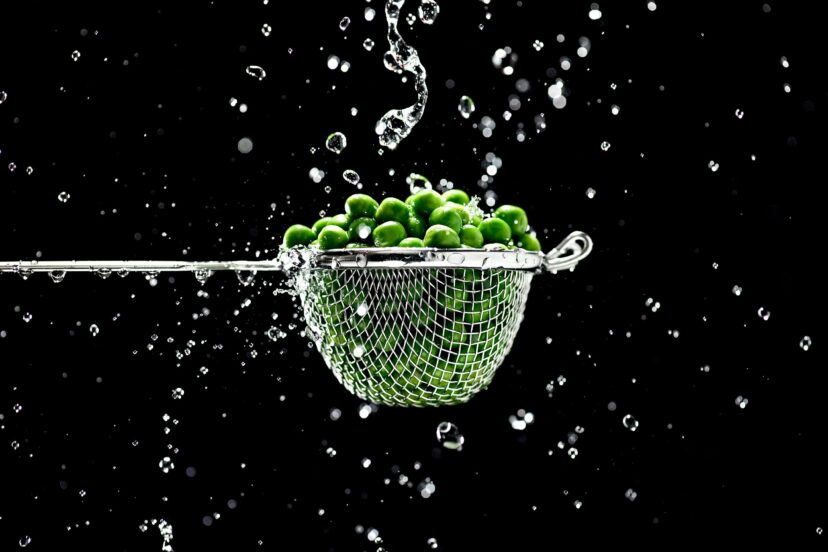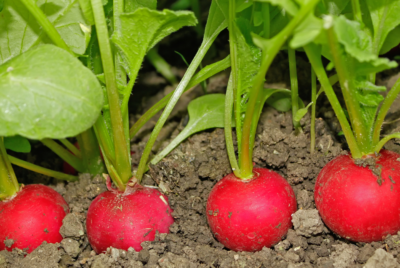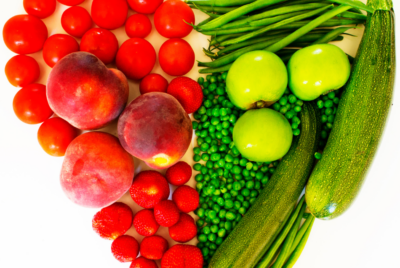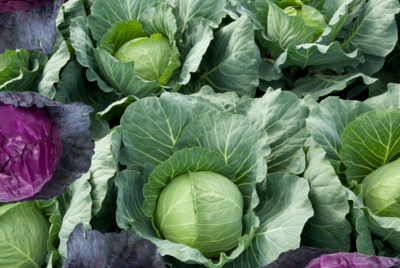Companion Plants for Peas
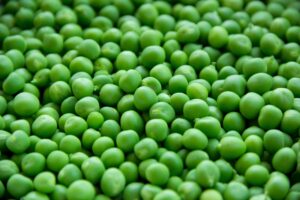
Introduction to Companion Planting with Peas
1. Understanding the concept
Hey there, fellow garden enthusiasts! Let’s dive into the world of companion planting, specifically focusing on peas. You might be wondering, why bother with companion planting? Well, it’s all about creating a harmonious garden where plants support each other’s growth.
II. The Best Companions for Peas
As a passionate gardener, I’m always excited to share insights on how to make our green friends thrive. Today, let’s talk about peas – those delightful, sweet pods we all love. But, did you know that peas can perform even better with the right companions? Let’s explore the best companions for peas, why these pairings work, and how they benefit your garden.
1. Overview of Suitable Plants
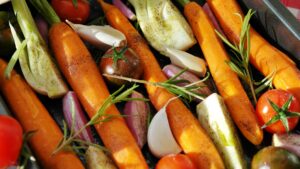
a. Carrots
These root vegetables are more than just a staple in the kitchen. In the garden, carrots and peas are best buddies. The reason? Carrots help to break up the soil with their deep roots, making it easier for the pea roots to grow.
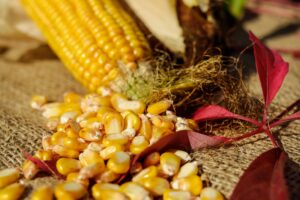
b. Corn
This tall plant acts as a natural trellis for pea vines to climb on. It’s a space-saving technique that also fosters a symbiotic relationship.
c. Cucumbers
Sharing similar water and sunlight needs, cucumbers and peas make great garden-mates.
Plus, their differing root depths mean they don’t compete for nutrients.

d. Radishes
Quick-growing radishes are great to plant alongside peas. They help to loosen the soil, which benefits the pea roots.
e. Lettuce and Spinach
These leafy greens have shallow roots and don’t compete with peas for nutrients.
They also provide ground cover, helping to keep the soil moist and cool.
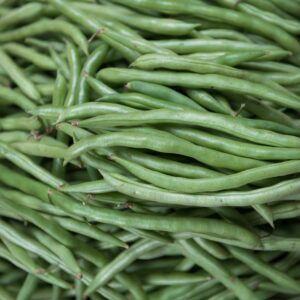
f. Beans
Like peas, beans add nitrogen to the soil, which benefits both plants.
g. Marigolds
Not only do they add a splash of color to your garden, but marigolds also deter pests that might otherwise feast on your peas.
h. Mint
This herb repels pests, but be cautious as it can be invasive. Consider planting it in a pot near your peas.
2.Why They Are Beneficial
a. Pest Control
Certain companions, like marigolds and mint, naturally deter pests, reducing the need for chemical pesticides.
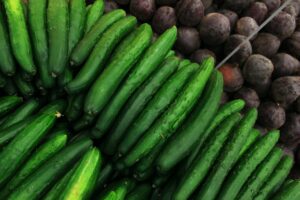
b. Soil Health
Plants like beans and peas enrich the soil with nitrogen, which is essential for plant growth.
c. Physical Support
Sturdy plants like corn provide natural support for pea vines, encouraging vertical growth and saving space.
d. Improved Yield
Companion planting often results in a healthier, more robust crop. This is due to the synergistic effects of these plant combinations, which can lead to improved growth and yield.
e. Disease Prevention
Diverse plantings can help prevent the spread of disease. Different plants attract different types of insects and are susceptible to different diseases. By mixing up your plants, you reduce the risk of a single pest or disease wiping out your entire crop.
In summary, companion planting with peas isn’t just about getting a great harvest. It’s about creating a balanced ecosystem in your garden, where plants work together to support each other. This harmony not only benefits the plants but also contributes to a more sustainable and environmentally friendly gardening practice. Happy gardening!
III. Herbs and Flowers as Peas’ Companions
Venturing into the world of gardening, one quickly learns that peas, like people, enjoy good company. In this case, their companions come in the form of various herbs and flowers. These plants don’t just add beauty to your garden; they bring along a host of benefits for your pea plants. Let’s delve into the types of herbs and flowers that serve as excellent companions for peas, and understand the advantages they offer.
1. Types of Herbs and Flowers

a. Marigolds
These vibrant flowers are more than just a feast for the eyes. Marigolds are known for their ability to repel common garden pests like aphids and beetles, which can be detrimental to pea plants.
b. Chives
This herb not only complements peas in the kitchen but also in the garden. Chives help deter pests, and their strong scent can mask the smell of pea plants, keeping them hidden from pests.
c. Mint
While mint is famous for its invigorating aroma, it’s also a powerhouse in repelling pests. Planting mint near peas can help keep away troublesome insects. However, mint can be invasive, so it’s often best to plant it in pots to prevent it from overtaking the garden.
d. Alyssum
This lovely flower attracts beneficial insects like ladybugs, which feed on aphids – a common pest for peas. Alyssum also acts as a living mulch, keeping the soil moist and cool.
e. Nasturtiums
Known for their bright and edible flowers, nasturtiums are a natural trap crop for aphids, luring them away from peas. They also attract beneficial predators like hoverflies.
2. Advantages with Companion Plants for Peas
a. Pest Control
Many herbs and flowers act as natural pest repellents. This organic approach to pest control keeps your pea plants healthier without the use of harmful chemicals.
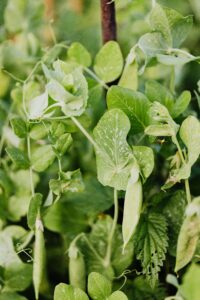
b. Attracting Beneficial Insects
Certain flowers like alyssum and nasturtiums attract insects that are beneficial for peas. These insects not only pollinate the plants but also prey on harmful pests.
c. Improving Soil Health
Some companion plants help in adding essential nutrients back into the soil or assist in better water retention, which in turn benefits the pea plants.
d. Enhancing Growth
The presence of certain herbs and flowers can stimulate growth in pea plants, leading to a more bountiful harvest.
e. Disease Prevention
By attracting a diverse range of insects and creating a more balanced ecosystem, these companions can help reduce the likelihood of disease spread among the pea plants.
Incorporating these herbs and flowers into your pea garden can transform it into a thriving, vibrant, and productive space. Not only do they contribute to the health and yield of your peas, but they also add an aesthetic charm to your garden. So, as you plan your pea plot, consider these companion plants as your allies in creating a flourishing garden ecosystem.
Plants to Avoid Near Peas
In the realm of gardening, it’s just as important to know which plants don’t get along as it is to know which do. Peas, with their delicate nature and specific growth requirements, can be negatively impacted by certain plants. Let’s explore the plants that should be kept away from peas and understand the reasons behind these incompatibilities.
1. Incompatible Plants
In the realm of gardening, it’s just as important to know which plants don’t get along as it is to know which do. Peas, with their delicate nature and specific growth requirements, can be negatively impacted by certain plants. Let’s explore the plants that should be kept away from peas and understand the reasons behind these incompatibilities.
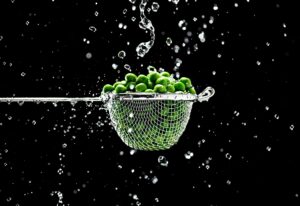
2. Onions and Garlic
These members of the allium family, though beneficial in many garden setups, are not friendly neighbors for peas. They can inhibit the growth of pea plants.
3. Potatoes
Potatoes tend to compete aggressively for soil nutrients and can overshadow the less robust pea plants, potentially stunting their growth.
4. Gladiolus and Iris
These beautiful flowering plants can attract thrips, a type of insect that is harmful to pea plants.
Fennel
Fennel is known to be a poor companion for most plants, including peas. It tends to release substances that inhibit the growth of surrounding plants.
Peppers and Tomatoes
These plants belong to the nightshade family and can potentially spread blight, which is harmful to peas.
2. Reasons for Incompatibility
a. Competition for Nutrients
Plants like potatoes can deplete the soil of essential nutrients, leaving less available for the less competitive pea plants.
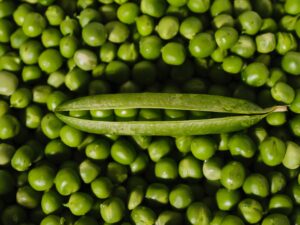
b. Root Space Competition
Certain plants have root systems that can overpower or interfere with the roots of pea plants, hindering their ability to absorb water and nutrients.
c. Pest and Disease Attraction
Some plants attract specific pests or are prone to diseases that can easily spread to pea plants. For example, gladiolus and iris attract thrips, while peppers and tomatoes can spread blight.
d. Allelopathy
This is a biological phenomenon where certain plants (like fennel) release chemicals that can inhibit the growth of surrounding plants.
e. Overcrowding and Shading
Some plants, particularly those that grow larger or spread wide, can overshadow pea plants, reducing their access to sunlight and causing overcrowding.
Understanding these incompatibilities is crucial for any gardener looking to optimize their pea crop. By carefully planning your garden layout and being mindful of these unfriendly companions, you can ensure that your peas have the best environment to flourish. Happy gardening!
VI. Soil and Sunlight Considerations for Growing Peas
When it comes to gardening, creating the right environment is key to nurturing healthy plants. For peas, two critical factors in this environment are the soil conditions and sunlight exposure. Let’s delve into what constitutes ideal soil conditions and the appropriate sunlight requirements for peas, ensuring your pea plants can thrive to their fullest potential.
1. Ideal Soil Conditions

a. Soil Type
Peas prefer well-drained soil. They don’t do well in heavy, clayey soils because these can retain too much moisture, leading to root rot.
Light, loamy soils are ideal as they provide good drainage and are rich in organic matter.
b. pH Level
The ideal soil pH for peas is slightly acidic to neutral, ranging from 6.0 to 7.0.
If your soil is too acidic or too alkaline, you can amend it using lime (to decrease acidity) or sulfur (to increase acidity).
c. Nutrient Content
While peas are known to fix their own nitrogen in the soil, they still benefit from a balanced nutrient-rich environment. Before planting, it’s beneficial to mix in compost or aged manure to provide essential nutrients.
d. Soil Preparation
Before sowing pea seeds, ensure that the soil is loose and well-tilled. This allows for proper root growth and adequate water penetration.
2. Sunlight Requirements
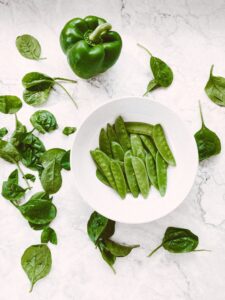 a. Amount of Sunlight
a. Amount of Sunlight
Peas need a good amount of sunlight to grow properly. Ideally, they should receive at least 6 hours of sunlight per day. However, they can tolerate partial shade, especially in warmer climates.
b. Morning Sunlight
Exposure to the cooler morning sun is preferable for peas, particularly in hot regions. This is because pea plants tend to fare poorly in excessive heat.
c. Seasonal Considerations
In most regions, peas are planted in early spring. They can tolerate light frosts and actually prefer cooler growing conditions. For this reason, ensuring they get enough sunlight during the shorter days of early spring is crucial.
d. Shade in Hot Climates
In regions with hot summers, providing some afternoon shade can be beneficial to prevent the plants from overheating, especially once temperatures start to climb.
By understanding and managing these soil and sunlight considerations, you can create an optimal growing environment for your pea plants. Proper soil preparation, ensuring the right pH level and nutrient content, coupled with adequate sunlight exposure, are key steps to a successful pea harvest. Remember, a little attention to these details goes a long way in the world of gardening!
VII. Watering and Fertilization Tips with Companion Plants for Peas
Proper watering and fertilization are vital for the health and productivity of pea plants. Peas are relatively low-maintenance in these aspects, but paying attention to their specific needs can significantly enhance their growth and yield. Let’s dive into the optimal watering practices and fertilizer preferences for peas.
1.Watering Needs
a. Consistency is Key
Peas prefer consistent moisture levels. The soil should be kept evenly moist, but not waterlogged. Overwatering can lead to root rot, while under-watering can stress the plants.
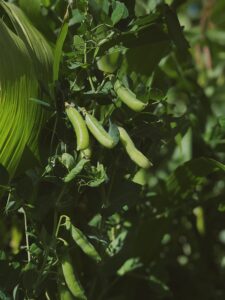
b. Frequency of Watering
The frequency of watering depends on your soil type and climate. Generally, watering once a week with about an inch of water is sufficient. However, during dry spells or in sandy soils that drain quickly, more frequent watering may be necessary.
c. Deep Watering
It’s better to water deeply and less frequently than to give shallow waterings more often. Deep watering encourages the roots to grow deeper, making the plants more drought-tolerant.
d. Avoid Wetting Foliage
When watering, aim for the base of the plants. Wet foliage can promote fungal diseases like powdery mildew, especially if the leaves stay damp overnight.
e. Mulching
Applying a layer of organic mulch around the pea plants can help retain soil moisture and reduce the frequency of watering.
2. Fertilizer Preferences
a. Low Nitrogen Requirement
Since peas fix their own nitrogen from the atmosphere, they require less nitrogen than many other plants. Using a fertilizer high in nitrogen can actually reduce the yield of pea plants.
b. Balanced Fertilizer
Before planting, you can work a balanced, low-nitrogen fertilizer into the soil. A fertilizer with a higher phosphorus and potassium content (e.g., 5-10-10) is ideal.
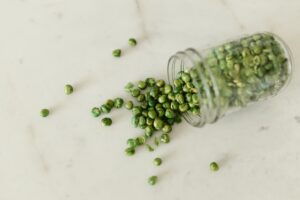
c. Compost and Organic Matter
Incorporating compost or well-rotted manure into the soil before planting can provide a slow-release source of nutrients. This organic matter also improves soil structure and water retention.
d. Fertilizing Frequency
Generally, peas do not require additional fertilizer after planting if the soil is well-prepared. However, if your soil is particularly poor, a side dressing of a balanced fertilizer midway through the season can help.
e. pH Consideration
If your soil is too acidic or alkaline, this can affect nutrient availability. Ensuring the soil pH is between 6.0 and 7.0 will help peas to access the nutrients they need.
By following these watering and fertilization tips, you can create the ideal conditions for your peas to thrive. Regular, deep watering and the correct use of fertilizer will support robust growth and a bountiful pea harvest. Remember, understanding and catering to the specific needs of your plants is the key to a successful and rewarding gardening experience.
VIII. Pest Control and Prevention with Companion Plants for Peas
Peas, while a delight to grow, can attract various pests that may hinder their growth and reduce crop yield. Knowing the common pests that target pea plants and employing natural pest control methods can help you manage these issues effectively, ensuring a healthy and productive pea garden. Let’s explore the common pests that peas face and the natural strategies to control and prevent them.
1. Common Pests for Peas
a. Aphids
These tiny, sap-sucking insects can weaken pea plants by feeding on their juices. They also excrete a sticky substance called honeydew, which can lead to sooty mold growth.
b. Pea Moths
The larvae of pea moths can damage the peas inside the pods, making them unsuitable for consumption.
c. Cutworms
These caterpillars are known for cutting through young pea seedlings at soil level, often destroying them.
d. Spider Mites
These tiny pests can cause yellowing or browning of leaves and can be particularly troublesome in hot, dry conditions.
e. Powdery Mildew
While technically a fungal disease and not a pest, powdery mildew can be a common problem for pea plants, especially in humid conditions.
2. Natural Pest Control Methods
a. Companion Planting
Planting certain flowers and herbs, such as marigolds, chives, and mint, near your peas can help repel pests. For example, marigolds emit a scent that deters aphids.
b. Encourage Beneficial Insects
Ladybugs, lacewings, and hoverflies are natural predators of aphids and other pests. You can attract these beneficial insects by planting flowers like alyssum and cosmos.
c. Regular Inspection
Regularly check your pea plants for signs of pests. Early detection means you can manage a small problem before it becomes a large infestation.
d. Physical Barriers
Using floating row covers can protect young pea plants from moths and other pests. Ensure the covers are secured but allow room for the plants to grow.
e. Neem Oil
This natural oil can be effective against a variety of pests, including aphids and spider mites. It’s safe for the plant and does not harm beneficial insects.
f. Diatomaceous Earth
Sprinkling diatomaceous earth around your pea plants can deter cutworms and other crawling pests.
g. Water Spray
A strong jet of water can help dislodge aphids and spider mites from the plants.
h. Fungal Disease Prevention
Ensure good air circulation around your plants and avoid overhead watering to reduce the risk of powdery mildew. If mildew appears, a solution of baking soda and water can be used as a mild fungicide.
i. Healthy Soil Practices
Keeping your soil healthy and well-balanced can make your plants more resilient to pests and diseases.
By implementing these natural pest control methods, you can manage and prevent common pests in your pea garden. Remember, a proactive and integrated approach to pest management is often the most effective. Happy and healthy gardening!
IX. Harvesting and Storage Tips
Harvesting peas at the right time and storing them properly are crucial steps to enjoy the fruits of your gardening labor. Proper harvesting ensures you get the best flavor and texture, while effective storage methods prolong the freshness of your peas. Let’s explore the best practices for harvesting peas and tips for storing them effectively.
1.Best Practices for Harvesting
a. Timing
Harvest timing is key for peas. They should be picked when they are plump but before they become hard. For snow and snap peas, the pods should be swollen, but still tender. For garden peas, the pods should be firm and green.
b. Regular Checks
Peas can mature quickly, especially in warm weather. Check your plants every 1-2 days as the harvest time approaches.
c. Morning Harvest
If possible, harvest peas in the morning when they are cool. This helps retain their sweetness and crisp texture.
d. Gentle Handling
When picking peas, use both hands to avoid damaging the plant. Hold the vine with one hand and pick the pea with the other.
e. Continuous Harvest
Regular harvesting encourages the plant to produce more pods, so don’t hesitate to pick them as soon as they’re ready.
2 Storing Peas Effectively
a. Immediate Cooling
After harvesting, cool your peas as soon as possible. This helps preserve their sweetness and texture. You can do this by blanching them briefly in boiling water and then plunging them into ice water.
b. Drying
If you plan to store peas for a longer period, dry them thoroughly after blanching and cooling to prevent freezer burn.
c. Freezing
Freezing is a great way to store peas. Spread the blanched, cooled peas on a baking sheet in a single layer, freeze them, and then transfer them to airtight containers or freezer bags. This method prevents them from freezing into a solid block, making it easier to use only what you need later.
d. Refrigeration
For short-term storage, refrigerate peas in a perforated bag. They should last for about 5 to 7 days in the refrigerator.
e. Canning
Canning is another option for long-term storage. However, it requires proper sterilization and sealing techniques to ensure food safety.
Drying and Storing Seeds: If you’re saving peas for planting next season, let the pods dry on the plant until they rattle, then remove them, extract the seeds, and store in a cool, dry place.
By following these harvesting and storage tips, you can maximize the enjoyment of your pea crop. Whether you’re eating them fresh, freezing for later use, or saving seeds for the next planting season, these methods will help ensure your peas are at their best. Happy gardening and bon appétit!
X. Seasonal Considerations
Peas are a cool-season crop, and their planting and growth are significantly influenced by seasonal and weather conditions. Understanding these factors is crucial for successful pea cultivation. Let’s delve into the key seasonal considerations, including the best planting and growing seasons for peas, and how different weather conditions can impact their growth.
1.Planting and Growing Seasons
a. Early Spring Planting
Peas are typically one of the first vegetables planted in the garden. They are best sown as soon as the soil can be worked in early spring. Peas thrive in cool temperatures and can even tolerate light frosts.
b. Fall Planting
In some regions, planting peas in late summer or early fall for a fall harvest is possible. They will mature as the weather cools.
c. Succession Planting
To extend the harvest period, consider planting peas in succession. Sow seeds every two weeks during the cool season.
d. Avoiding Heat
Peas do not perform well in hot weather. High temperatures can cause the plants to stop producing pods, and the peas inside can become hard and starchy.
2.Weather Impact
a. Temperature
The ideal growing temperature for peas is between 55°F and 70°F (13°C and 21°C). They can germinate in temperatures as low as 40°F (4°C), but germination will be slower.
b. Frost Tolerance
Peas can tolerate light frosts, but young seedlings are susceptible to heavy frosts. Using row covers can provide protection if unexpected severe frost is forecasted.
c. Rainfall
While peas need moist soil, excessive rain can lead to root rot and other fungal diseases. Well-drained soil is essential to prevent waterlogging.
Sunlight: Although peas can tolerate partial shade, they produce best in full sun, especially in cooler climates. In warmer regions, some afternoon shade can be beneficial.
d. Wind
Pea plants, especially climbing varieties, can be vulnerable to strong winds. Providing support structures like trellises and shielding them from prevailing winds can help protect them.
By taking these seasonal and weather factors into account, you can optimize the growth conditions for your pea plants. Planting at the right time, providing adequate support, and protecting the plants from extreme weather are key to a successful pea harvest. With proper planning and care, you can enjoy a bountiful pea crop that is well-suited to your specific climate and growing conditions.
XI. Companion Plants for Peas – Success Stories
Companion planting is a practice steeped in tradition and backed by both anecdotal and scientific evidence. Many gardeners have seen remarkable results from integrating this approach into their gardens. Let’s explore some real-life success stories of companion planting with peas, highlighting the key lessons learned from these experiences.
Real-Life Examples
1. Peas and Carrots in a Home Garden
Story: A gardener planted peas alongside carrots. The deep-rooting carrots helped loosen the soil, which benefited the shallower roots of the peas. The peas, in return, added nitrogen to the soil, benefiting the carrots.
Lesson Learned: This pairing demonstrated the mutual benefits of root depth variation and nitrogen fixation. It showed how companion planting could lead to more efficient use of space and resources in the garden.
2. Community Garden with Peas and Marigolds:
Story: In a community garden, gardeners noticed that plots with peas planted near marigolds had fewer issues with pests. The marigolds seemed to deter aphids and other pests naturally.
Lesson Learned: This highlighted the importance of natural pest deterrents. Marigolds, with their pest-repelling properties, can play a crucial role in reducing the reliance on chemical pesticides.
Organic Farm Implementing Polyculture with Peas:
Story: An organic farm practiced polyculture by growing peas alongside several other crops, including spinach and radishes. This diversity led to fewer pest problems and healthier, more vigorous plants.
Lesson Learned: The diversity in planting can lead to a more resilient garden ecosystem. Polyculture, as opposed to monoculture, can reduce the incidence of pests and diseases.
Peas and Corn in a Small-Scale Farm:
Story: A small-scale farmer grew peas alongside corn, using the corn stalks as a natural trellis for the peas. This resulted in a higher yield of peas without the need for additional supports.
Lesson Learned: This example showed the effectiveness of using companion plants for physical support, reducing the need for artificial structures and maximizing vertical space.
3. Lesson Learned
a. Mutual Benefits
Companion planting often leads to symbiotic relationships where both plants benefit, as seen in the peas and carrots example.
b. Natural Pest Control
Utilizing plants with pest-repelling properties, like marigolds, can significantly reduce pest issues.
c. Biodiversity
A diverse planting scheme can lead to a more balanced and resilient garden ecosystem.
d. Space Efficiency
Companion planting can maximize the use of space, as demonstrated by peas using corn stalks for support.
e. Soil Health
Plant combinations like peas and carrots can improve soil structure and nutrient content.
These success stories from different gardening environments underscore the effectiveness of companion planting. By understanding and applying these lessons, gardeners and farmers can create more productive, sustainable, and healthy gardens and fields.
XII. Conclusion: Enhancing Your Pea Garden
In conclusion, success with companion plants for peas in your garden is a rewarding endeavor that benefits greatly from understanding and applying the principles of companion planting, proper soil and sunlight management, attentive watering and fertilization, natural pest control, and appropriate harvesting and storage techniques. Here’s a summary of the key points and how they contribute to sustainable gardening practices.
1.Summarizing Key Points on Companion Plants for Peas
a. Companion Planting
Pairing peas with compatible plants like carrots, marigolds, and corn can enhance growth, deter pests, and improve soil health. Avoid incompatible plants like onions and garlic.
b. Soil and Sunlight
Peas thrive in well-drained, loamy soil with a pH of 6.0 to 7.0 and require at least 6 hours of sunlight daily, preferably in cooler temperatures.
c. Watering and Fertilization
Consistent, deep watering is ideal for peas, avoiding over-saturation. A low-nitrogen, balanced fertilizer is sufficient since peas fix their own nitrogen.
d. Natural Pest Control
Employing natural methods like companion planting, encouraging beneficial insects, and using organic deterrents like neem oil helps maintain a healthy pea crop.
e. Harvesting and Storage
Harvest peas at their peak for the best flavor and texture. Cool, dry, and freeze them promptly for storage to retain their quality.
2.Encouraging Sustainable Practices
a. Eco-Friendly Gardening
Companion planting and natural pest control methods reduce the need for chemical fertilizers and pesticides, promoting a more eco-friendly approach to gardening.
b. Biodiversity
Implementing a variety of plants in your garden supports a diverse ecosystem, which is beneficial for soil health, pest control, and overall garden vitality.
c. Resource Efficiency
Efficient use of water and organic fertilizers, along with maximizing space through companion planting, leads to a more sustainable gardening practice.
d. Soil Preservation
Rotating crops and incorporating organic matter into the soil helps maintain soil health and fertility, ensuring a productive garden for years to come.
e. Community Learning
Sharing your experiences and successes with companion planting and sustainable practices can inspire and educate others in your community, fostering a culture of environmentally conscious gardening.
In essence, growing peas isn’t just about the harvest; it’s a journey that encompasses an understanding of nature’s intricate balance and the fulfillment of working in harmony with the environment. By embracing these principles and practices, you not only enhance your pea garden but also contribute to a more sustainable and healthier world. Happy gardening!
XIII. FAQs about Companion Plants for Peas
What are the best companion plants for peas?
The top companion plants for peas include carrots, marigolds, corn, cucumbers, radishes, lettuce, spinach, and beans. These plants offer various benefits such as improving soil health, providing physical support, and aiding in pest control.
2. How much sunlight do peas need to grow effectively?
Peas thrive with at least 6 hours of sunlight each day. They prefer cooler temperatures, so in warmer climates, providing some afternoon shade can be beneficial.
3. When is the ideal time to plant peas?
You should plant peas as early as the soil can be worked in the spring. They can handle light frosts. In some regions, planting in late summer or early fall for a fall harvest is also successful.
4. How do I protect my pea plants from pests naturally?
To naturally protect pea plants from pests, use companion planting, encourage beneficial insects like ladybugs, apply neem oil, use physical barriers like row covers, and maintain healthy soil conditions.
5. What are the best practices for watering and fertilizing pea plants?
Water peas deeply and consistently to keep the soil moist but not waterlogged. Since peas fix their own nitrogen, use a low-nitrogen, balanced fertilizer. Adding compost or aged manure to the soil before planting can also provide essential nutrients.
Sweet Potato Companion Planting

